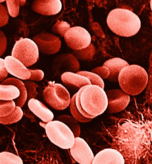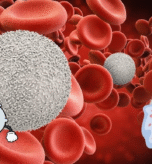Hyperpigmentation is a common skin concern characterized by the appearance of dark spots, patches, or discoloration on the skin. It can be caused by a variety of factors, including sun exposure, hormonal changes, inflammation, and skin injuries. If you have hyperpigmentation-prone skin, managing it requires a combination of skincare routine, lifestyle changes, and professional treatments. In this article, we will provide a comprehensive guide on managing hyperpigmentation-prone skin.
Understanding Hyperpigmentation
Before we dive into the management of hyperpigmentation-prone skin, it’s essential to understand the underlying causes of hyperpigmentation. There are several types of hyperpigmentation, including:
- Melasma: A type of hyperpigmentation caused by hormonal changes, often triggered by pregnancy, birth control pills, or hormone replacement therapy.
- Post-Inflammatory Hyperpigmentation (PIH): A type of hyperpigmentation caused by inflammation, often triggered by acne, skin injuries, or surgical procedures.
- Solar Lentigines: A type of hyperpigmentation caused by sun exposure, often appearing as dark spots or freckles on the skin.
Skincare Routine for Hyperpigmentation-Prone Skin
A consistent skincare routine is crucial in managing hyperpigmentation-prone skin. Here are some tips to help you create an effective skincare routine:
- Cleanse your skin: Use a gentle cleanser that effectively removes dirt, oil, and makeup without stripping your skin of its natural oils.
- Exfoliate regularly: Exfoliating helps remove dead skin cells and promotes cell turnover, which can help reduce the appearance of hyperpigmentation. Use a gentle exfoliant containing alpha-hydroxy acids (AHAs) or beta-hydroxy acids (BHAs) one to three times a week.
- Use a toner: A toner can help balance your skin’s pH and remove any remaining impurities after cleansing. Look for a toner that contains witch hazel or rosewater.
- Apply a serum or treatment product: Use a serum or treatment product that contains ingredients that can help reduce the appearance of hyperpigmentation, such as:
- Vitamin C: A powerful antioxidant that can help brighten and even out your skin tone.
- Niacinamide: A form of vitamin B3 that can help improve skin hyperpigmentation and reduce inflammation.
- Kojic acid: A natural ingredient that can help inhibit the production of melanin, reducing the appearance of hyperpigmentation.
- Retinoids: Derivatives of vitamin A that can help promote cell turnover, reduce inflammation, and improve skin texture.
- Moisturize: Use a moisturizer that provides broad-spectrum sun protection and contains ingredients that can help soothe and calm your skin.
Lifestyle Changes for Managing Hyperpigmentation-Prone Skin
In addition to a consistent skincare routine, making lifestyle changes can also help manage hyperpigmentation-prone skin. Here are some tips:
- Protect your skin from the sun: Sun exposure can exacerbate hyperpigmentation, so it’s essential to protect your skin from the sun’s UV rays. Use a broad-spectrum sunscreen with at least SPF 30 daily, and reapply every two hours or immediately after swimming or sweating.
- Avoid picking or popping pimples: Picking or popping pimples can lead to inflammation, which can cause hyperpigmentation. Instead, use a spot treatment that contains salicylic acid or benzoyl peroxide to help reduce inflammation and promote healing.
- Maintain a healthy diet: Eating a diet rich in fruits, vegetables, and whole grains can help provide your skin with the nutrients it needs to stay healthy and radiant. Foods that are high in antioxidants, such as berries and leafy greens, can help reduce inflammation and promote collagen production.
- Stay hydrated: Drinking plenty of water can help flush out toxins and keep your skin hydrated and plump.
Professional Treatments for Hyperpigmentation-Prone Skin
While a consistent skincare routine and lifestyle changes can help manage hyperpigmentation-prone skin, professional treatments can provide more intense and targeted results. Here are some professional treatments that can help reduce the appearance of hyperpigmentation:
- Chemical peels: A chemical peel can help exfoliate the skin and promote cell turnover, reducing the appearance of hyperpigmentation.
- Microdermabrasion: Microdermabrasion is a non-invasive exfoliating treatment that can help remove dead skin cells and promote cell turnover.
- Laser therapy: Laser therapy can help target and reduce the appearance of hyperpigmentation by breaking up melanin deposits and promoting collagen production.
- Microneedling: Microneedling is a minimally invasive treatment that uses tiny needles to create micro-injuries in the skin, promoting collagen production and cell turnover.
Conclusion
Managing hyperpigmentation-prone skin requires a combination of a consistent skincare routine, lifestyle changes, and professional treatments. By understanding the underlying causes of hyperpigmentation and taking a holistic approach to skincare, you can help reduce the appearance of dark spots, patches, and discoloration and achieve a brighter, more even-toned complexion. Remember to always consult with a dermatologist or skincare professional before starting any new skincare products or treatments.



